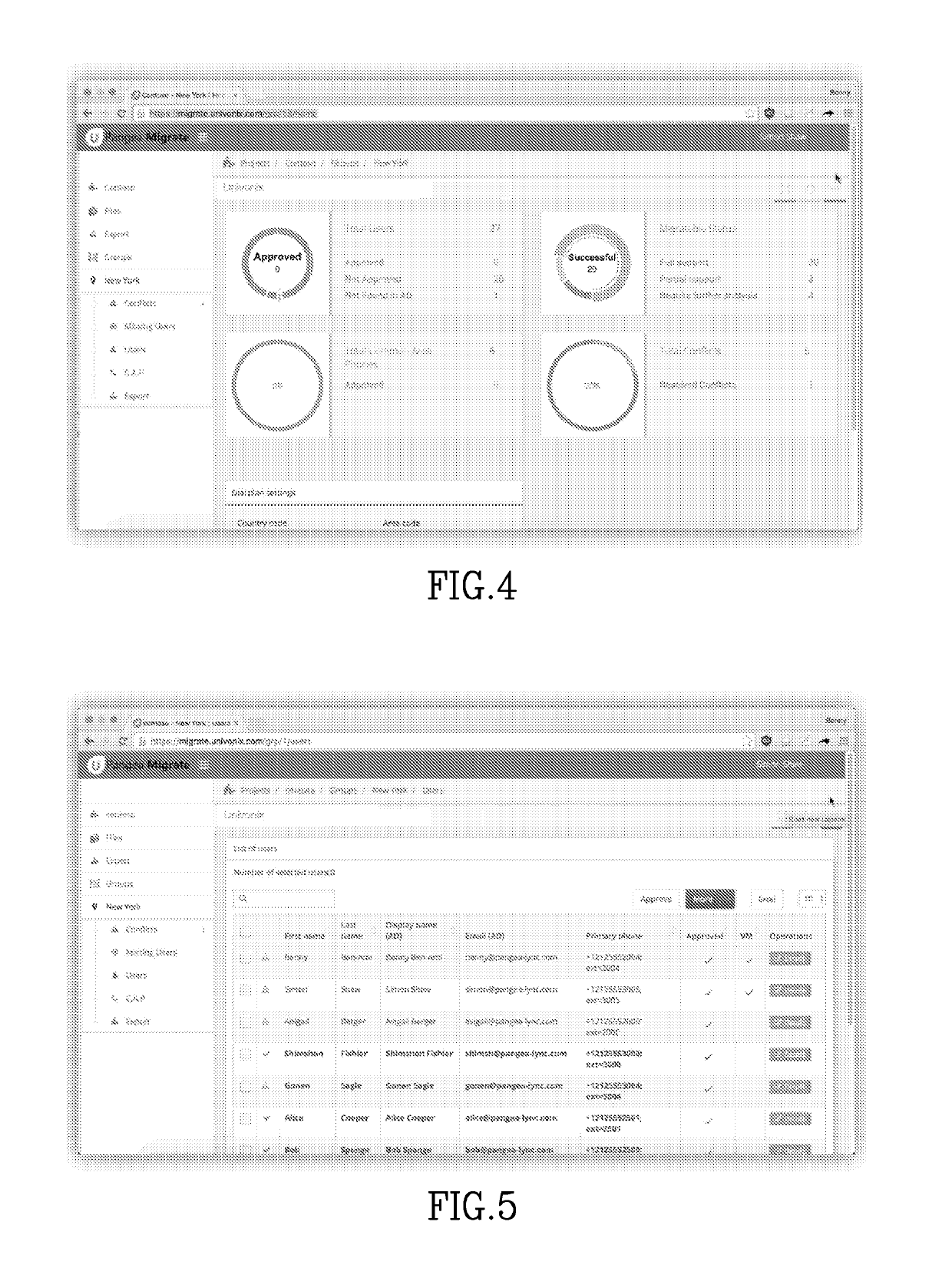Transition from a Legacy PBX System to an Advanced IP-Enabled System
- Summary
- Abstract
- Description
- Claims
- Application Information
AI Technical Summary
Benefits of technology
Problems solved by technology
Method used
Image
Examples
Embodiment Construction
[0060]A better understanding of the present invention will now be obtained when the following non-limiting detailed description is considered in conjunction with the following drawings.
[0061]FIG. 1 illustrates a schematic view where a migration process takes place in a medium to large enterprise, whereby a legacy PBX system such as Cisco Call Manager™, Avaya IP Office™ and the like is replaced by an advanced IP-enabled system, such as Skype for Business.
[0062]A flow chart exemplifying a method for enabling replacement of the legacy PBX with the advanced IP-enabled system is illustrated in FIG. 2, showing an embodiment of the invention:
[0063]The first step (step 100) according to this embodiment is providing configuration data records that relate to the legacy PBX system (i.e. the source system) and possibly also organizational information. This step may be carried out by extracting the configuration data records from the legacy PBX system. One option for carrying out such a configur...
PUM
 Login to View More
Login to View More Abstract
Description
Claims
Application Information
 Login to View More
Login to View More - R&D Engineer
- R&D Manager
- IP Professional
- Industry Leading Data Capabilities
- Powerful AI technology
- Patent DNA Extraction
Browse by: Latest US Patents, China's latest patents, Technical Efficacy Thesaurus, Application Domain, Technology Topic, Popular Technical Reports.
© 2024 PatSnap. All rights reserved.Legal|Privacy policy|Modern Slavery Act Transparency Statement|Sitemap|About US| Contact US: help@patsnap.com










